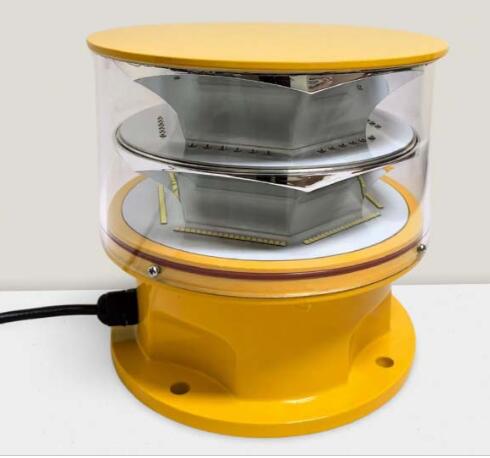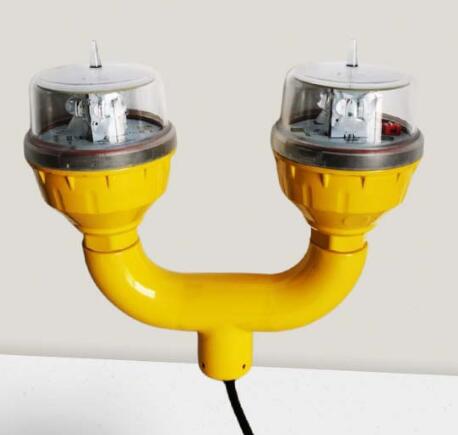The Dual Guardians: Unveiling the Critical Role of Double Obstruction Light Systems
In the meticulously engineered realm of aviation safety, redundancy is not a luxury—it is an absolute doctrine. Every system, every protocol, has a backup, a fail-safe designed to uphold integrity even in the face of failure. Standing as silent, vigilant sentinels on a vast array of structures, from skyscrapers to telecommunications towers and industrial chimneys, are the double obstruction light systems. This specific configuration is far more than a simple lighting arrangement; it is a profound embodiment of the aviation industry's unwavering commitment to safety, ensuring that the critical function of marking hazards never, ever goes dark.
The core principle behind a double obstruction light system is elegantly simple yet critically important: to provide immediate and automatic redundancy. A single light unit, regardless of its advanced technology, remains a single point of failure. A bulb can burn out; a power supply can falter; a component can succumb to extreme weather. For a pilot navigating at twilight, in poor visibility, or at night, the sudden absence of a expected warning light can transform a known, charted obstacle into an invisible and lethal threat. The double system directly eliminates this vulnerability. It consists of two complete, independent light units—each with its own lamp (or LED array), power supply, and control circuitry—housed within a single fixture or mounted immediately adjacent to one another.

This design philosophy is deeply rooted in the stringent regulations that govern aerial navigation. Aviation authorities worldwide, including the International Civil Aviation Organization (ICAO) and the Federal Aviation Administration (FAA), explicitly recognize the necessity of redundancy for critical obstruction lighting. Their guidelines often mandate such systems for structures deemed particularly hazardous due to their extreme height, location near airports, or position within common flight paths. The regulations specify that upon the failure of the primary lamp, the secondary lamp must activate automatically and instantaneously. This seamless handover is crucial; there is no permissible window of darkness. The obstruction must remain conspicuously visible at all times to aircraft in the vicinity.
The technology enabling these systems has evolved dramatically, with Light Emitting Diodes (LEDs) revolutionizing the field. The implementation of a double obstruction light system using traditional incandescent lamps was fraught with challenges, primarily due to high power consumption, significant heat generation, and shorter lifespans. The advent of high-intensity LED technology has been a game-changer. LEDs are inherently more reliable, energy-efficient, and possess an operational lifespan tens of thousands of hours longer than older technologies. This makes them perfectly suited for a redundant system. The low power draw allows for efficient backup power solutions, and their durability means the secondary unit remains in a state of readiness, largely unaffected by age while waiting in standby mode.
| double obstruction light |
Beyond the core redundancy of the lights themselves, the concept of "double" often extends to the entire ecosystem of the obstruction lighting system. A truly resilient installation incorporates multiple layers of protection:
Dual Power Sources: Systems are frequently connected to two independent electrical grids. If one grid fails, the system automatically switches to the other without interruption.
| double obstruction lights |
Uninterruptible Power Supplies (UPS) and Batteries: On-site battery packs or UPS units provide immediate power during a transition between grids or a total external power failure. These batteries are kept charged and are regularly tested to ensure reliability.

Advanced Monitoring and Control: Modern double obstruction light systems are invariably "smart." They are equipped with sophisticated monitoring modules that continuously diagnose the health of both the primary and secondary lamps, the power sources, and the control circuitry. If a fault is detected—for instance, the primary LED array fails—the monitor not only triggers the secondary light but also immediately sends an alert, often via GSM or satellite communication, to a remote maintenance control center. This allows for a rapid response, turning a potential emergency into a scheduled maintenance event.
The physical and environmental resilience of these systems cannot be overstated. A double obstruction light fixture is engineered to be extraordinarily robust. It must operate reliably while exposed to the most severe conditions: hurricane-force winds, torrential rain, blistering sun, lightning strikes, and, in the case of industrial chimneys, extreme heat and corrosive emissions. The fixtures are crafted from materials like marine-grade aluminum and hardened polycarbonate, designed to withstand thermal expansion, constant vibration, and UV degradation. Each individual unit within the double system is sealed to IP65 standards or higher, making it dust-tight and protected against water jets, ensuring internal components remain pristine.
The strategic placement of these double systems on a structure is a science in itself. Regulations dictate specific patterns—typically at the highest point of the obstacle and at regular intervals down its height—to clearly define its silhouette and scale. For a super-tall skyscraper or a tower, this might mean multiple double obstruction light systems installed at different levels, each acting as an independent node of safety. This creates a visual cascade of light that allows a pilot to quickly ascertain the structure's breadth and height from a distance, providing crucial time for navigation and decision-making.
The double obstruction light system is a masterpiece of preventive engineering. It is a direct physical manifestation of the aviation industry's core safety principle: redundancy. It moves beyond the basic function of illumination into the realm of guaranteed performance. By integrating dual lights, redundant power, and intelligent monitoring, these systems create a resilient shield against potential catastrophe. They are the unsung guardians of the lower skies, the dual beacons that stand watch through day and night, ensuring that the ever-growing tapestry of ground-based obstacles remains a known, visible, and safe part of every pilot's navigational map. Their persistent, rhythmic flashing is a heartbeat of safety, a promise that is kept through meticulous engineering and an unwavering dedication to the preservation of life.
